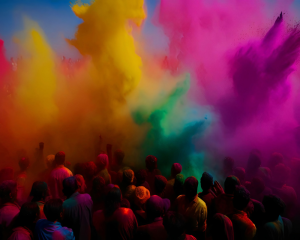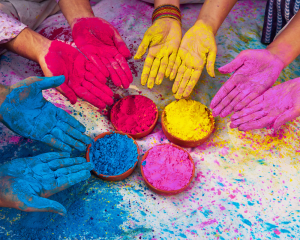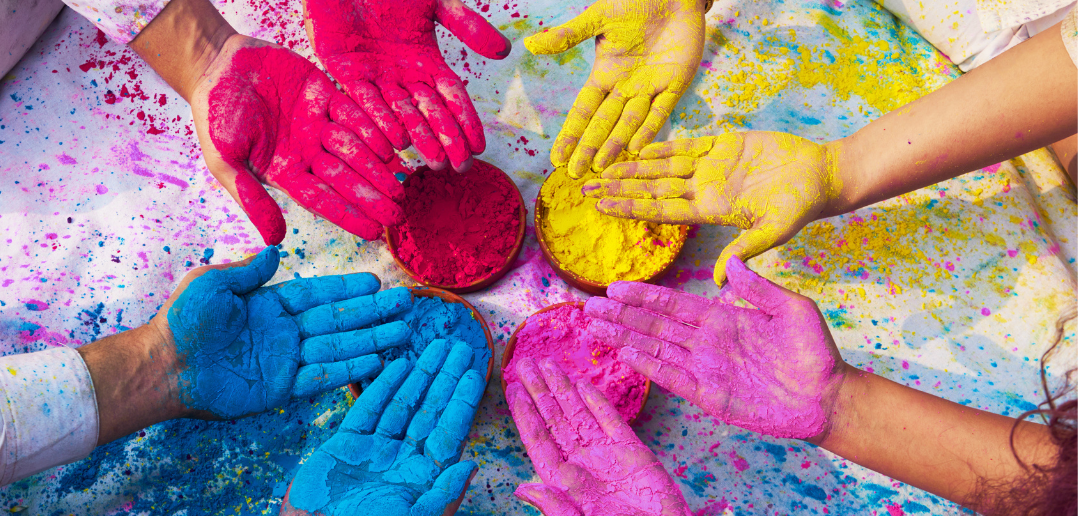Friday 14 March is Holi, a Hindu festival celebrated by many colleagues, ship and shore.
Often referred to as the ‘Festival of Colours’, Holi is one of the most vibrant and joyous festivals celebrated in India and among Indian communities around the world. This ancient festival marks the arrival of spring and the triumph of good over evil.
The origins of Holi can be traced back to several ancient Indian legends with one of the most popular being the story of Hiranyakashipu, an evil king who wanted everyone to worship him as a God, and his son, Prahlada, who worshipped the Lord Vishnu instead. Prahlada’s devotion to Lord Vishnu enraged the king who sought the help of his daughter, Holika, to try and kill Prahlada by tricking him into sitting on a burning pyre. However, due to his unwavering devotion to Lord Vishnu, Prahlada emerged unharmed, but Holika was consumed by the flames.

This event is commemorated each year on the eve of Holi, called Holika Dahan, where family and friends gather to light bonfires, sing, dance and rejoice and share some delicious treats and drinks. The next day however, known as Rangwali Holi, is when the real fun begins!
Participants throw coloured powders (known as gulal) and coloured water at each other, creating a kaleidoscope of colours that fill the streets. This comes from another Hindu legend which celebrates the legendary love between Radha and Krishna. According to the legend, the deity Krishna, whose skin was turned blue by a demon, was enamoured by Radha, the epitome of love and devotion. Worried that Radha would be put off by his unnatural appearance, Krishna vented to his mother who playfully suggested that he smear coloured powder on Radha’s face. Upon doing so, Radha fell in love with Krishna.

In recent years, Holi has gained prominence outside of India and various cultural organisations and communities host public events, allowing individuals to experience the colourful and lively spirit of the festival, irrespective of their cultural backgrounds.
But Holi is more than just the throwing of colours. It’s a celebration of life, love and the renewal or relationships. It brings people together, transcending barriers such as age, race, gender and religion as people embrace the spirit of forgiveness and renewal, forgetting past grievances and welcoming a future filled with positivity and love. As the colours fill the air, people are reminded of the beauty in diversity and the importance of unity.
Did you know that the colours used in Holi symbolise different things?
- Blue symbolises Krishna’s skin
- Red symbolises love and fertility
- Yellow signifies knowledge and happiness
- Green represents new beginnings
.

